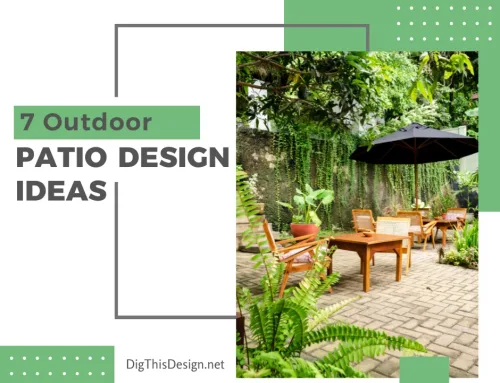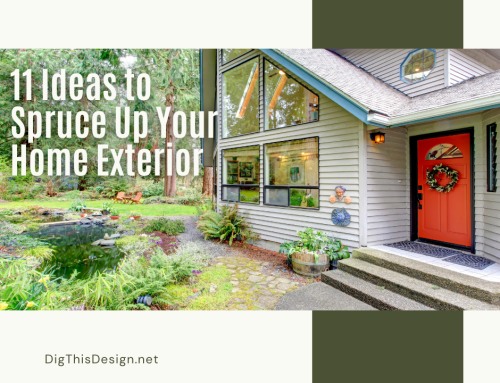Home Garden Tips and Ideas For Small spaces: With many people trying to discover new hobbies because of the pandemic, gardening has become one of their go-to pastimes as they spend more time at home. While this is relatively famous among countryside residents, many urban dwellers find it hard to even begin with gardening because of the limited space in their homes. Fortunately, there are many creative and viable ways to make the most of such limited space. How to Start a Backyard Garden? With the use of some tips and simple DIY home gardening ideas from this article, you’ll be able to produce a flower garden from scratch and greens in your backyard.
Small gardens are quite eminent these days. A typical small house may have rooftop gardens, small backyards, or urban homesteads. You can hire a landscape architect to restructure your small garden. No matter how limited your space is, don’t let it be in the way of your dream of having a beautiful, small garden.
6 Tips for a Small Successful Home Garden | Home Gardening Ideas

1. Consider Which Plants to Grow
First thing’s first, before being overwhelmed with all the gardening dos and don’ts, it’s crucial that you decide on what plants to grow. The plant you choose to grow in your small space can make or break your gardening success to a large extent. This also enables you to envision the right landscape design for your home.
The key is to choose plants that are easy to grow in smaller spaces. You can go for herbs, geraniums, tomatoes, lettuce, peppers, and other easy to care for plants to plant in your limited garden space. Know how you would want to use your plants – whether they will be used for design or produce. If you wish to go for fresh produce, herbs, greens, and flowers, are among the many options to choose from.
2. Go for Raised Garden Beds
It is no longer necessary to grow plants in long, parallel rows. Raised beds and square-foot gardening enable you to produce more food even in a limited amount of space. There are many benefits of opting for raised beds. For instance, there’s a low risk for pest infestation and weed formation, you also won’t have to worry about stormwater runoff. Garden boxes also allow you to focus your efforts in a smaller area, making it easier to care for, fertilize, and water regularly.
3. Vertical Space
Many people imagine gardens as horizontal spaces where they can plant from one place to another. With limited space, you must think outside of the box and look up instead. Think vertically, and you’ll be able to plant more than you can imagine. The first step is to design your vertical rack. Create a vertical garden tower by utilizing garden planters or repurposed plant containers that look great when hanging on walls. Build your garden vertically instead of horizontally.
4. Edible Greens
While flowers and plants add beauty and value to your home, you can also consider planting edible greens and fruits to maximize the use of your garden. It’s best to turn your lawn or green space into an edible garden in which you can generate organic and healthy produce. There are tips on laying out a vegetable garden, and with minimal effort, you can gather organic produce.
Not only will they add more life and color to your garden space, but you can also save on your fruit and vegetable expenses by harvesting them from your own garden. Examine your yard and see where you can plant your fruits and vegetables. Are there portions of your landscape that produce nothing? You can use the space instead for planting edible greens, giving you and your family healthy produce.
5. Small Containers
An excellent way to place plants in a small space is to use containers, particularly on the balcony or walkways. These small plant containers can be placed anywhere, making them convenient and portable. Depending on how much space you have, choose an appropriately sized container. You can put pots around your small garden and arrange them beautifully and attractively.
You may add other decorative elements to highlight and elevate your garden more. For instance, you may add garden ornaments, statues, fountains, and fences.
6. Check Unexplored Locations
Be creative with your chosen spot to grow a small garden in. There are many nooks and corners in which you can place your planters and garden beds. It’s all a matter of exploring your entire property. Don’t be afraid to use windowsills, walls, corners, and extra spaces in your small garden.
Aside from your small backyard, you can also check indoors and see if there’s a perfect space to display your indoor plants. Look around your home and examine each space.
Conclusion
A small practical garden requires good soil, plenty of sunlight, and adequate drainage, just like any other garden would. To maximize what you have, no matter how small the space is, you simply need to create a good layout for your garden. Hopefully, the DIY gardening ideas for beginners’ tips and tricks stated above have guided you in making your dream garden at home. It’s best to add your imagination and creativity to get the best outcomes.
Other Posts You Might Enjoy:
Go Green: Bring the Garden Inside for Health & Beauty
Sustainable Garden Design Tips for the Spring





